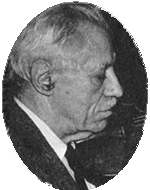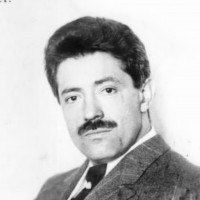

Fritz Kreisler
Born: 1875Died: 1962
Education: Vienna Conservatory
Career: Berlin Philharmonic
Friedrich 'Fritz' Kreisler was an Austrian-born violinist and composer. Regarded as one of the world's greatest violinists, he was able to produce a distinctive sound that was recognizable to anyone who heard it. These characteristics included a wide tempo, sustained vibrato, expressive phrasing, and significant use of portamento and rubato. His style, coupled with an incredibly sweet tone, is surprisingly reminiscent of pre-war Vienna. Born in Vienna to a Jewish father and a German Protestant mother, Kreisler studied at the Vienna Conservatory and Paris. His teachers include Jules Massenet, Anton Bruckner and Leo Delibes. Kreisler's American debut took place on November 10, 1888 at Steinway Hall in New York. He continued to tour the United States until 1889 before returning to Austria. Returning home, he applied and auditioned for the Vienna Philharmonic Orchestra, but was rejected by Arnold Roget, the conductor. It has been speculated that he did not blend easily into the orchestra, as Kreisler used vibrato frequently, while the rest of the orchestra used this technique sparingly. Finding that he had not been given a place in the orchestra, Kreisler changed his focus from music to medicine. He served for a time in the army, but eventually returned to violin in 1899 with the Berlin Philharmonic. In a series of concerts in the United States from 1901 to 1903, he began to attract considerable attention from the public. It was the premiere of Elgar's Violin Concerto in 1910 that brought him fame and attention. (Fritz commissioned this work, and Elga dedicated it to him.) He briefly rejoined the Austrian army to serve in World War I and was honorably discharged after being wounded. After being discharged, he returned to the United States for the remainder of the war. He returned to Europe in 1924 and lived in Berlin, but moved to France in 1938. When World War II began, Chrysler returned to the United States and became a naturalized citizen in 1943. His last performance was in 1947. He had several radio broadcast performances over the following year. Fritz was involved in two serious car accidents during his lifetime which greatly affected his life. The first occurred in 1941 when I was hit by a truck while crossing the street in New York. He suffered a fractured skull and was in a coma for over a week. Another car accident later in his life left him blind and deaf in later years, but he remained in good spirits. He died in New York in 1962 and is buried in a private cemetery in the Bronx. In addition to being an accomplished performer, Kreisler wrote a fair amount of music for violin, including encore solos such as "Liebesleid" and "Liebesfreud." Some of his compositions were written to reflect the style of other composers, such as Vivaldi and Tartini, as if pastiche. When it was discovered that the composition actually belonged to Chrysler, it caused an uproar among critics. However, Fritz himself pointed out that although the name has changed, the value of the work remains as the same critics have already praised his work. Besides solo violin, he also composed operettas, string quartets, and cadenzas, including the D major concerto by Paganini, Brahms, and Beethoven. Beethoven's Violin Concerto Cadenza in D major is the most popular among violinists today.

